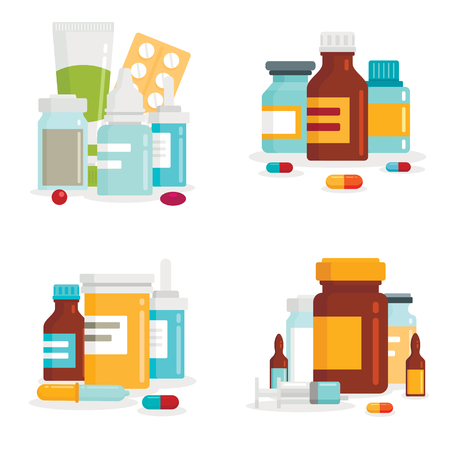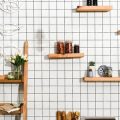Assessing What You Have
Before diving into the world of medicine cabinet organization, it’s essential to start with a thorough assessment of what you actually have tucked away. This step helps you avoid clutter, expired products, and ensures your cabinet is stocked with only the essentials you truly need. Begin by completely emptying your medicine cabinet—yes, every shelf and corner! Lay out all items on a clean surface so you can see everything at once. Take inventory of your medications, first-aid supplies, and personal care items like thermometers, tweezers, or allergy relief. As you sort through each item, check expiration dates and make a note of anything that looks unfamiliar or unnecessary. Separate prescription medicines from over-the-counter products, and set aside anything you no longer use or need. This process not only frees up space but also gives you a clear understanding of what belongs in your medicine cabinet moving forward. Taking the time to assess what you have is the crucial first step toward a more organized, safe, and family-friendly medicine cabinet.
Decluttering and Safe Disposal
It’s time to tackle the most crucial step in organizing your medicine cabinet: decluttering. Over time, it’s easy for expired prescriptions, half-used ointments, and mystery pills to pile up. Not only does this create chaos, but keeping old or unused medications can be unsafe for your family and the environment. Here’s how you can take charge of your medicine cabinet with practical tips for eliminating what you don’t need—and disposing of it responsibly.
How to Declutter Your Medicine Cabinet
- Empty Everything: Take out every item so you can see exactly what you have.
- Check Expiration Dates: Carefully examine each medication, ointment, and supplement for expiration dates. If it’s expired or the packaging is damaged, set it aside for disposal.
- Assess Usefulness: Ask yourself if you still use or need each item. If not, let it go.
- Group by Category: Before putting anything back, group similar items together—pain relievers, allergy meds, first aid supplies—to make organization easier in the next steps.
Safe and Environmentally Friendly Disposal Methods in the U.S.
Proper disposal of medications is vital to prevent accidental poisonings and protect our water supply. Here are the most recommended options across the United States:
| Disposal Method | Description | Best For |
|---|---|---|
| Drug Take-Back Programs | Many local police stations, pharmacies, or community centers host regular take-back events or provide drop boxes where you can safely dispose of medications. | Most prescription and over-the-counter medicines (except needles and certain controlled substances) |
| Authorized Collection Sites | The DEA provides a searchable database of authorized year-round collection sites near you at deadiversion.usdoj.gov. | Pills, patches, liquids (in original containers) |
| Household Trash (with Precautions) | If no take-back program is available, mix medications (do not crush) with undesirable substances like coffee grounds or cat litter in a sealed bag before placing them in the trash. | Certain non-hazardous over-the-counter medications; never for controlled substances unless directed by the FDA |
| Flushing (as last resort) | The FDA lists specific drugs that should be flushed only if take-back options aren’t available due to risk of harm from accidental exposure (FDA Flush List). | A small number of high-risk prescription drugs (e.g., fentanyl patches) |
Extra Tips for American Families
- Always remove personal information from prescription labels before disposal to protect your privacy.
- Avoid pouring medicines down the sink or toilet unless they are on the FDA Flush List.
- If unsure about a medication, ask your pharmacist for guidance on proper disposal.
A Clean Slate for Better Health
Tackling expired and unused meds isn’t just about tidying up—it’s a smart move for your family’s health and safety. Once you’ve cleared out the clutter using these U.S.-friendly disposal methods, you’ll be ready to organize what truly matters in your medicine cabinet!

3. Smart Categorization for Easy Access
When it comes to organizing your medicine cabinet, smart categorization is the key to saving time and reducing stress during those hectic moments. Start by grouping items based on type—think pain relievers, first-aid supplies, allergy medicines, and daily vitamins. Use clear bins or labeled shelves so each category is instantly recognizable. If you have a large family or roommates, consider dedicating specific areas or baskets to each person. This way, everyone has their own space for personal prescriptions or daily needs, making it much easier to avoid mix-ups.
Another pro tip: organize by frequency of use. Place everyday essentials like bandages and painkillers on the most accessible shelves, while less-used items like seasonal medications or travel-size products can be stored higher up or in the back. For families with little ones, keep children’s medications separate from adult products—and always out of reach for safety.
Don’t forget to label everything! Whether you use a label maker or simple masking tape and marker, clear labels help everyone know exactly where things belong and where to find them in a hurry. With these simple strategies, your medicine cabinet will transform into an efficient, user-friendly zone that works for every member of your household.
4. Choosing Storage Solutions That Work
When it comes to organizing your medicine cabinet, smart storage solutions are key—especially in American homes where bathrooms can range from spacious to downright cozy. Whether you’re working with a shallow cabinet or a tiny shelf, maximizing every inch while keeping essentials easy to grab is the name of the game. Let’s explore some popular U.S.-friendly organizers and clever hacks that help you make the most of your space.
Space-Saving Organizers for Every Cabinet
| Organizer Type | Best For | Pro Tip |
|---|---|---|
| Stackable Bins | Pills, ointments, small bottles | Label each bin by category (e.g., “First Aid,” “Cold & Flu”) for instant access. |
| Door-Mounted Racks | Frequently used items | Use adhesive racks or magnetic strips for lightweight tools like tweezers or nail clippers. |
| Lazy Susans (Turntables) | Larger bottles, vitamins, kids’ medicines | A quick spin keeps everything within reach—even in deep cabinets. |
| Tiered Shelf Risers | Prescription bottles, eye drops, sprays | Create a stadium effect so nothing gets lost in the back. |
| Pill Organizer Boxes | Daily medications and supplements | Great for families juggling multiple prescriptions—assign one per person or time of day. |
Clever Hacks for Small Spaces
- Go Vertical: Use stackable containers or shelf risers to double your storage without expanding the footprint.
- Categorize & Contain: Group items by use (first aid, allergy relief, pain management) and store them in clear bins for instant visibility.
- Utilize Cabinet Doors: Stick on small organizers for bandages or cotton swabs—perfect for those random little items that always disappear!
- Rotate Seasonally: Move out-of-season products (think cold meds in summer) to another spot and keep only what you need at arm’s reach.
- Add Labels: Invest in a label maker or write directly on containers with a dry-erase marker—no more guessing games during emergencies.
The American Family Approach: Accessibility Meets Safety
If you have kids at home, safety trumps convenience. Consider installing childproof locks on cabinets or placing potentially harmful items on higher shelves. Remember, an organized medicine cabinet isn’t just about aesthetics—it’s about making sure every family member can find what they need, when they need it, safely and efficiently.
5. Labeling Like a Pro
One of the most overlooked secrets to an organized medicine cabinet is effective labeling. Not only does it keep your shelves visually tidy, but it also brings peace of mind—especially in busy American households where safety and efficiency are top priorities. Let’s dive into creative and practical labeling solutions that will make your medicine cabinet work for everyone in your home.
Safety First: Kid-Friendly Labels
If you have little ones at home, safety should always come first. Use bold, brightly colored labels with simple symbols or icons (like smiley faces or stop signs) to designate which medicines are safe for children and which are strictly off-limits. You can even find pre-made safety stickers at most big-box stores or online retailers in the U.S.—or make your own with a label maker and colored tape. Place these labels front-and-center on shelves or bins to help older kids and babysitters easily spot what’s safe (and what’s not).
Clear Expiration Dates for Adults
No one wants to play guessing games when it comes to medication expiration dates. Use a permanent marker or printable labels to clearly mark the expiration date on every item as soon as you bring it home from the pharmacy or store. For even greater clarity, create a dedicated “Check Soon” bin for items expiring within the next three months. This habit not only prevents accidental usage of expired meds but also helps streamline your periodic cabinet clean-outs.
Grouping by Category: The American Way
Sort and label medicine by family needs—think categories like “Allergy Relief,” “Cold & Flu,” “First Aid,” and “Daily Vitamins.” Use sturdy plastic bins or baskets with waterproof, easy-to-read labels so everything has its place. This method is especially helpful during those 2 a.m. emergencies when you need to find something fast!
Pro Tip: Embrace Technology
If your family relies on multiple prescriptions, consider using a digital labeler with QR codes that link to dosage instructions, side effects, or refill reminders. Some families even use smartphone apps to track medications, adding another layer of organization and safety.
With these thoughtful labeling strategies, your medicine cabinet will serve your household’s needs—keeping everyone safe, informed, and stress-free all year round.
6. Maintaining Your Organized Cabinet
Congratulations! You’ve sorted, labeled, and streamlined your medicine cabinet—now let’s make sure it stays that way. Keeping your cabinet safe, clean, and clutter-free all year long is easier than you think with a simple maintenance routine and a couple of seasonal checklists. Here’s how to keep your medicine cabinet in tip-top shape for your family’s needs.
Set Up a Handy Maintenance Routine
Designate one day each month—maybe the first Saturday or Sunday—as “Medicine Cabinet Check-In.” Use this time to quickly scan shelves for out-of-place items, spills, or expired products. Wipe down surfaces with a damp cloth and make sure labels are still legible. Refill any essentials that are running low, like bandages or allergy meds.
Monthly Quick-Check List:
- Check expiration dates on medications and supplements
- Wipe down shelves and containers
- Reorganize misplaced items
- Restock everyday necessities
Embrace Seasonal Deep Cleaning
Each season brings its own set of health concerns—from summer bug bites to winter colds—so use the change in weather as a cue for a more thorough clean-out.
Spring/Summer Checklist:
- Toss expired sunscreen, bug spray, and allergy meds
- Add fresh adhesive bandages for outdoor adventures
- Check thermometers and replace batteries if needed
Fall/Winter Checklist:
- Update cold and flu supplies (cough syrup, throat lozenges)
- Check heating pads or reusable warm packs for wear and tear
- Add vitamin D or immune support supplements if needed
Pro Tips for Busy Families
If you have young kids or teens, make it a family affair! Assign age-appropriate tasks: little ones can help sort bandages by size, while older kids can check expiration dates. Set a phone reminder so maintenance never slips through the cracks.
Your Medicine Cabinet: Safe & Ready All Year Long!
A well-maintained medicine cabinet isn’t just about organization—it’s about peace of mind. With regular check-ins and seasonal updates, you’ll always be ready for life’s little (and big) emergencies. Here’s to a safe, healthy, and effortlessly organized home!

